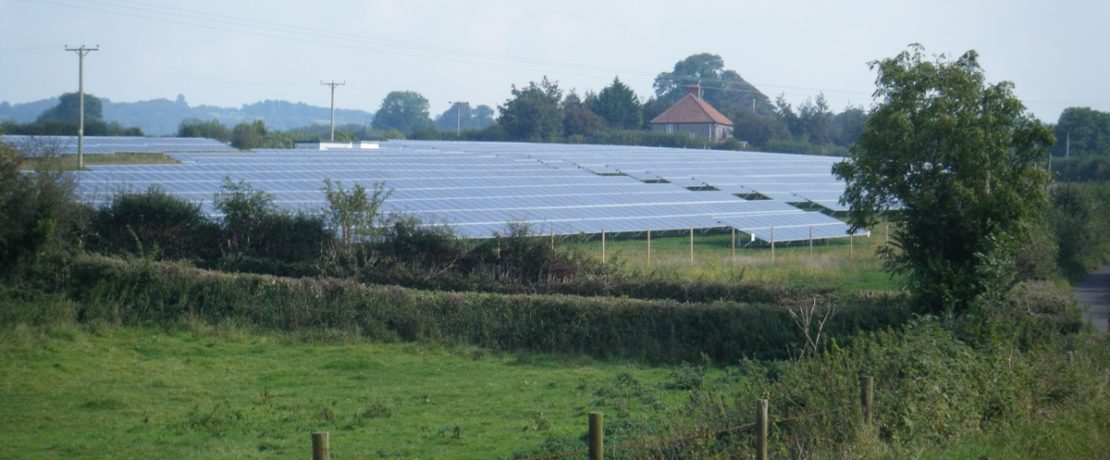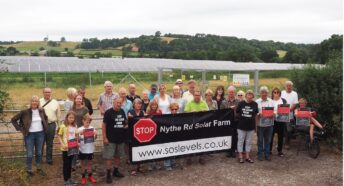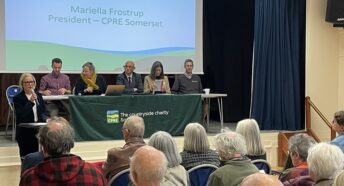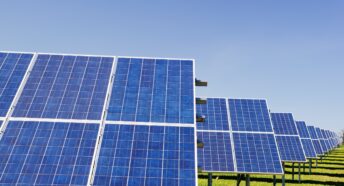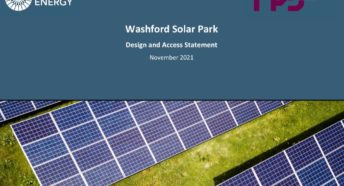Solar power in Somerset
There are many competing demands for land use. Our countryside is used for growing crops, rearing livestock, providing habitats for wildlife, countryside access – and generating energy.
The hot, dry summer of 2022 and soaring energy costs make renewable energy more important than ever. We are all aware of the need to grow more food as imports become more costly and unstable. We also need to protect our landscapes and help wildlife. How can we balance all these competing demands on our countryside?
Here we explain CPRE Somerset’s position on solar farms in the countryside.
Does CPRE Somerset support solar power?
Yes. We are living in a climate emergency. CPRE Somerset wants to see more of our energy coming from clean, renewable sources.
However, solar farms must be sited in the most suitable places, reducing environmental damage. We support solar farms when they are situated on brownfield (previously used) land. They may be suitable for the poorest quality agricultural land, but only if they do not have an adverse impact on the surrounding landscape or habitats.
We support “rooftop renewables” and believe this should be made a priority.
When would CPRE Somerset object to a solar farm?
To protect our best farmland
Best and Most Versatile (BMV) agricultural land must be protected from development. Every hectare, will be needed to grow food as our weather systems become even more unpredictable.
Placing solar farms on BMV agricultural land is in conflict with current government guidance in the National Planning Policy Framework. Despite this, CPRE’s report Building on our Food Security (2022) found that 1,400 hectares of our best farmland were used up for renewable energy projects since 2010.
To protect sensitive landscapes
In Somerset, we will oppose solar farm applications in our finest, protected landscapes (Mendip Hills AONB, Quantock Hills AONB, Blackdown Hills AONB and Exmoor National Park). We also do not want to see them on the Somerset levels or adjacent to the Levels and overlooking them. Some proposed solar farms would be visible for miles around and from multiple footpaths and rights of way. Their visual impact can be severe, particularly in a valued landscape. We will highlight the cumulative impact of more than one solar farm clustered in a landscape.
To protect heritage assets
The introduction of thousands of panels in geometric rows can result in harm to the settings and context of heritage assets such as listed buildings. We will speak out to protect them when necessary.
To protect nature
Often applications for solar farms come with promises of increased biodiversity and images of buzzing bees and wildflowers around the site. In reality, existing habitats like hedgerows are sometimes removed to allow access for construction. Often the promise of wildflower meadows does not materialise. We will scrutinise all applications to ensure that existing habitats are not damaged. Where plans are approved, we will insist that planning conditions for habitat creation are enforced.
When would CPRE Somerset support a solar farm?
When it is on a roof!
A revolution in ‘rooftop renewables’ is urgently needed. Of course, not all roofs are suitable for solar panels, but we need to harness the potential of those that are. CPRE will support policies making solar roofs the default option for any building being built, converted or upgraded.
Read more about our campaign for a rooftop revolution
Otherwise – as long as all the criteria mentioned previously are met, then we will support solar farms under the following circumstances:
When the community will benefit
We will support community energy schemes providing they meet our criteria for protecting the countryside It is important that even community schemes do not adversely impact the landscape, heritage assets or reduce our ability to grow food.
When nature will benefit
All solar applications on greenfield land must have a binding requirement to increase habitat diversity.
To sum up
We need renewable energy, but we also need our countryside! We need it for food security, nature recovery and other climate mitigation measures such as tree and hedgerow planting. Our green spaces are vital for the health and wellbeing of people and wildlife.
There are lots of applications for solar farms on farmland across Somerset, all driven by commercial developers. We think Somerset communities deserve a better and more strategic approach. We want to see a countywide strategy that makes sure renewable energy schemes go where they will cause least harm, including rooftops and brownfield land.
You can read CPRE’s explainer on solar energy and the countryside here
Here are some of our recent planning comments on solar farm or Battery Energy Storage Systems (BESS) applications in Somerset:
Solar farm at Halse, near Taunton
Solar Farm at Ham Farm, Creech St Michael
solar farm – Pipplepen Farm, near Crewkerne
Battery Energy Storage System (BESS) Styles Close, Frome
Please sign our petition calling for a rooftop revolution
